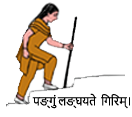Rheumatic fever is an important cause of arthritis in children, which follows throat infection by micro-organisms known as streptococci. Large joints of extremities such as knees, ankles, elbows, and wrists swell one after another (fleeting arthritis). Untreated swelling subsides within a week or so and effectively responds to anti-inflammatory pain killers. Arthritis lasts for four weeks or less and never causes permanent joint damage. Swelling of the heart (carditis) is a serious consequence of rheumatic fever. Rheumatic heart disease occurring 10-20 years after the initial attack of acute rheumatic fever is the most common form of acquired disease of heart valves. Nodules and rashes over the skin and involuntary limb movements (Chorea) are other important features of acute rheumatic fever. Laboratory investigations are not helpful in diagnosis. ASO titer is a frequently ordered but usually misinterpreted laboratory investigation. A four-fold rise (320 Todd Units) is significant in a patient with other features of rheumatic fever mentioned earlier. Sonography of the heart (Echo-cardiography) is the most sensitive test for diagnosing heart involvement in this disease. American Heart Association has issued guidelines for the diagnosis of the initial attack of Acute Rheumatic Fever. Treatment consists of high-dose aspirin, bed rest, and steroids in severe heart involvement. Penicillin (Long-acting, Injection once in 3 weeks) is prescribed for an indefinite period to avoid recurrence of rheumatic fever and infection of damaged valves.
